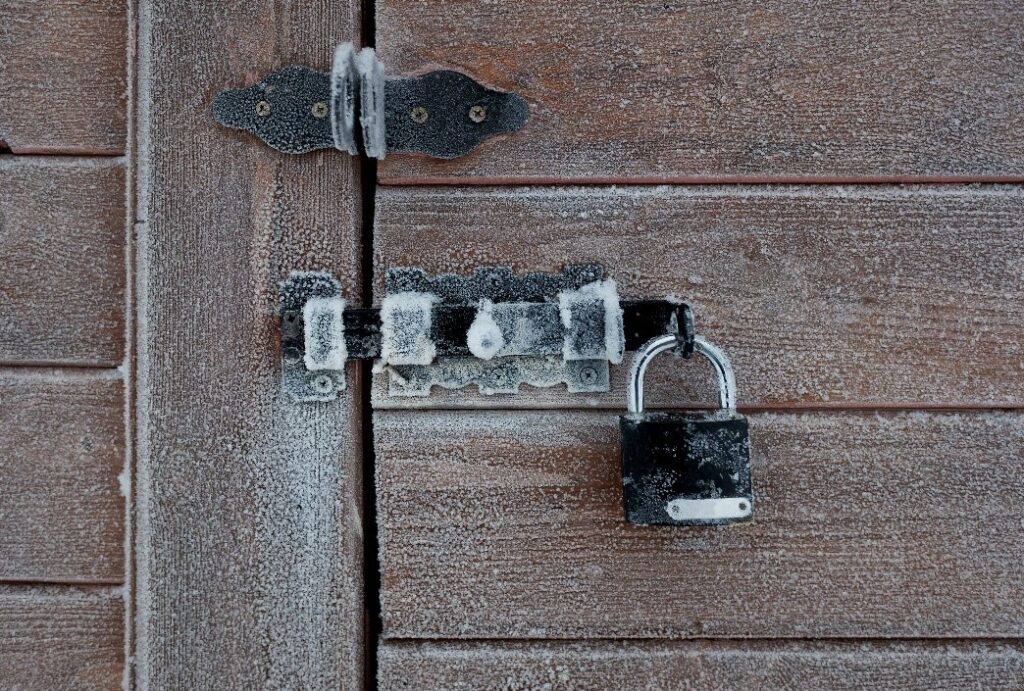Mastering the Chill: A Comprehensive Guide on Preventing Outdoor Locks from Freezing

Introduction:
As winter’s icy embrace descends upon our surroundings, the inconvenience of frozen outdoor locks becomes an all-too-familiar challenge. Dealing with a frozen lock can be not only frustrating but also time-consuming and potentially costly. In this extensive guide, we explore a multitude of strategies, preventive measures, and practical tips to help you safeguard your outdoor locks from freezing, ensuring smooth and hassle-free access to your spaces even in the coldest of temperatures.
Understanding the Causes of Frozen Locks:
Before delving into prevention techniques, it’s essential to understand the factors that contribute to the freezing of outdoor locks. Moisture infiltration, temperature fluctuations, and the specific design of the lock can all play significant roles in lock freezing. When temperatures drop, any lingering moisture within the lock mechanism can freeze, causing the internal components to seize up and preventing the lock from functioning properly.
Preventive Measures:
- Lubricate Locks Regularly:
A fundamental preventive measure is to regularly lubricate your outdoor locks with a high-quality, weather-resistant lubricant. Applying a silicone-based or graphite lubricant helps create a protective barrier against moisture, reducing the likelihood of freezing. Make lubrication a part of your routine maintenance schedule, especially before the onset of winter.
- Install a Protective Cover:
Shielding your outdoor locks from the elements can be achieved by installing protective covers. These covers, often made of weather-resistant materials like plastic or metal, act as a barrier against rain, snow, and direct exposure to the wind. They are particularly effective in preventing moisture from seeping into the lock mechanism.
- Use De-Icing Solutions:
Applying de-icing solutions to your locks is an effective preemptive measure. Products like lock de-icers or even household items like rubbing alcohol can help melt any existing ice within the lock and prevent further freezing. Keep a small bottle of de-icer handy during the winter months for quick and efficient application.
- Install Outdoor Heaters:
In regions with extremely cold climates, consider installing outdoor heaters or heat cables near vulnerable locks. These devices provide a consistent source of warmth, preventing the formation of ice within the lock. Ensure that the chosen heating solution is safe for outdoor use and follows proper installation guidelines.
- Choose Anti-Freeze Locks:
Investing in anti-freeze or weather-resistant locks is a proactive measure to minimize the risk of freezing. These locks are designed with materials that are less prone to freezing and are equipped to withstand harsh weather conditions. When replacing or upgrading outdoor locks, opt for models specifically designed for cold climates.
Practical Tips for Winter Lock Maintenance:
- Regularly Clear Snow and Ice Buildup:
Keep the area surrounding your locks clear of snow and ice. Regularly shovel or use de-icing agents to prevent the accumulation of these elements, reducing the likelihood of them finding their way into the lock mechanism.
- Insulate the Surrounding Area:
Insulating the area around outdoor locks can contribute to maintaining a more stable temperature. Consider using weather-stripping or insulation materials to seal gaps and cracks in doors and frames, minimizing exposure to the cold.
- Keep Spare Keys Indoors:
During the winter months, avoid leaving spare keys outside where they are susceptible to freezing temperatures. Keeping spare keys indoors ensures that you have access to functioning keys even if your primary lock experiences freezing issues.
- Seek Professional Maintenance:
Engage the services of a professional locksmith for regular maintenance checks, especially before the winter season. Locksmiths can assess the condition of your locks, recommend appropriate preventive measures, and address any issues that may contribute to freezing.
Conclusion:
Preventing outdoor locks from freezing requires a combination of proactive measures, routine maintenance, and a keen awareness of environmental factors. By incorporating these strategies into your winter preparedness routine, you can significantly reduce the risk of encountering frozen locks and the associated inconveniences. Remember, an investment in preventive measures today can save you time, effort, and potentially costly repairs in the future. As winter descends, equip yourself with the knowledge and tools needed to master the chill and keep your outdoor locks functioning smoothly throughout the season.




